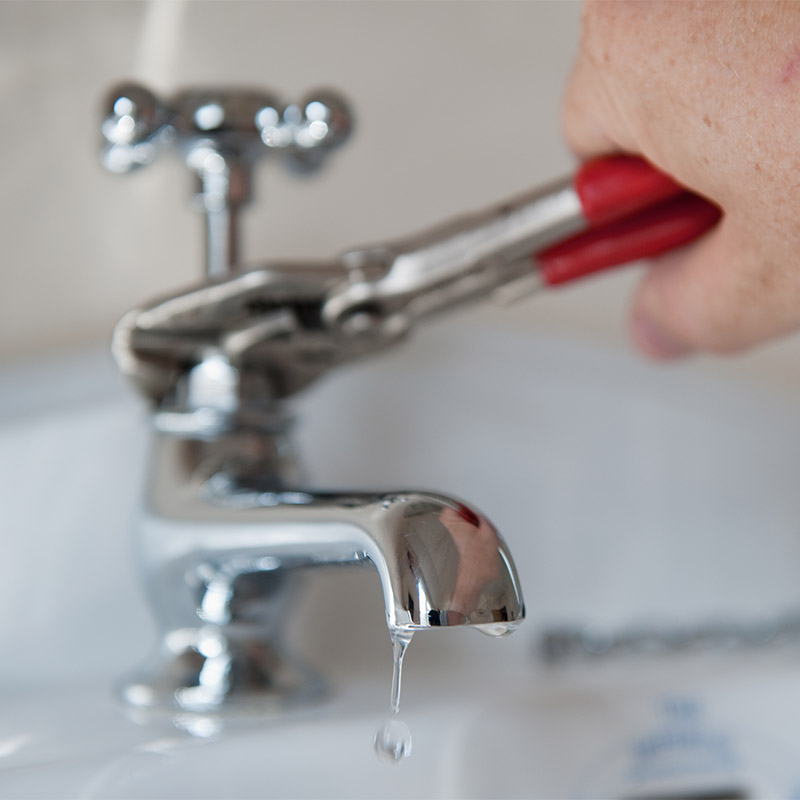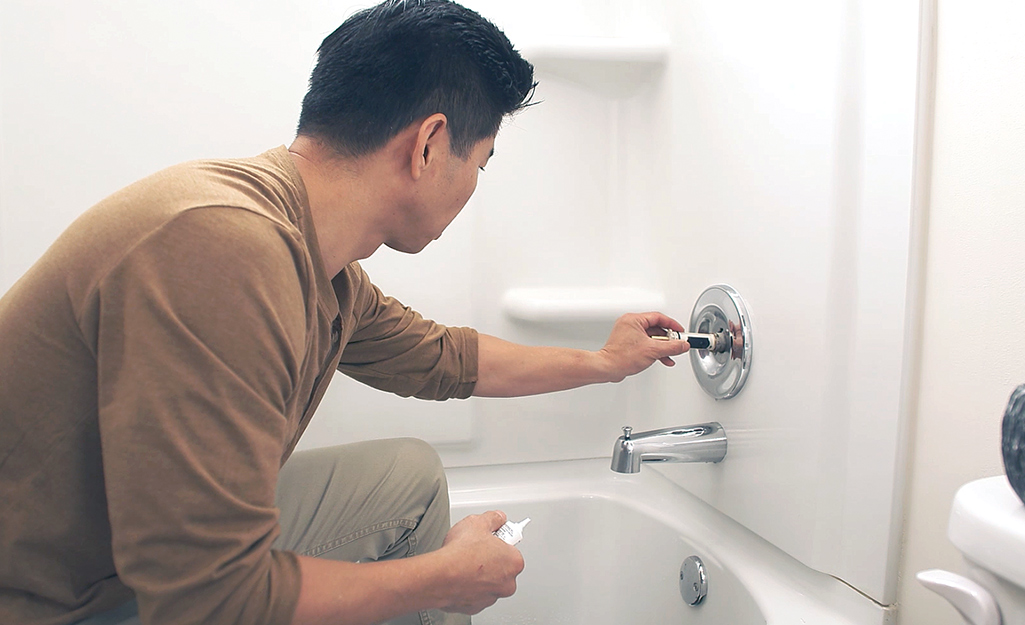Which It's Important to Resolve a Leaking Faucet
Which It's Important to Resolve a Leaking Faucet
Blog Article
Every person will have their own individual thoughts on the subject of Should I Repair or Replace a Leaky Faucet?.

Dripping faucets might look like a small aggravation, yet their impact goes beyond just the annoyance of the sound. From wasting water to sustaining unneeded economic expenses and health and wellness dangers, disregarding a dripping faucet can bring about various consequences. In this write-up, we'll explore why it's important to address this usual family problem immediately and properly.
Wastefulness of Water
Ecological Effect
Dripping taps add substantially to water wastage. According to the Epa (EPA), a solitary tap trickling at one drip per second can throw away more than 3,000 gallons of water each year. This not only pressures water sources yet likewise impacts ecological communities and wild animals depending on them.
Step-by-Step Guide to Taking Care Of a Dripping Tap
Tools Called for
Prior to attempting to deal with a trickling faucet, gather the necessary devices, consisting of a flexible wrench, screwdrivers, substitute parts (such as washers or cartridges), and plumber's tape.
Common Tap Issues and Their Solutions
Identify the sort of faucet and the particular issue creating the drip. Typical problems consist of worn-out washing machines, corroded shutoff seats, or malfunctioning O-rings. Refer to producer directions or on-line tutorials for step-by-step advice on repair services.
Financial Expenses
Increased Water Bills
Past the ecological effect, dripping faucets can inflate water expenses substantially. The built up waste gradually translates into greater utility costs, which could have been stayed clear of with timely repair services.
Potential Building Damage
In addition, long term leaking can bring about damage to fixtures and surface areas bordering the faucet. Water buildup can trigger discoloration, corrosion, and even structural problems if left unattended, causing additional repair service costs.
Health and wellness Problems
Mold And Mildew and Mildew Development
The constant existence of dampness from a dripping faucet produces a perfect setting for mold and mildew and mold development. These fungis not just endanger indoor air quality but additionally present health and wellness dangers, especially for individuals with respiratory conditions or allergic reactions.
Waterborne Illness
Stagnant water in trickling taps can come to be a breeding place for germs and various other pathogens, raising the risk of waterborne illness. Impurities such as Legionella bacteria thrive in stationary water, potentially bring about serious illnesses when consumed or breathed in.
DIY vs. Expert Fixing
Pros and Cons of Do It Yourself Repair Work
While some may try to deal with a dripping tap themselves, DIY repair services come with their very own collection of obstacles. Without correct expertise and devices, do it yourself efforts can exacerbate the problem or cause incomplete repairs, prolonging the issue.
Benefits of Employing an Expert Plumber
Working with a professional plumber makes certain that the underlying cause of the trickling faucet is attended to efficiently. Plumbing professionals possess the knowledge and tools to identify and fix tap concerns successfully, saving time and lessening the risk of additional damages.
Ecological Responsibility
Private Payment to Preservation
Taking responsibility for dealing with trickling faucets lines up with more comprehensive initiatives towards water conservation and environmental sustainability. Every person's activities collectively make a substantial impact on preserving valuable sources.
Sustainable Living Practices
By prioritizing prompt repair services and taking on water-saving habits, individuals contribute to lasting living techniques that benefit both existing and future generations.
Safety nets
Normal Upkeep Tips
To stop trickling taps, execute routine upkeep such as cleaning up aerators, evaluating for leakages, and changing damaged components promptly. Additionally, consider setting up water-saving gadgets or updating to much more effective fixtures.
Relevance of Prompt Services
Resolving leaking taps as quickly as they're discovered prevents further water wastage and possible damage, eventually conserving both water and cash in the long run.
Effect On Residential Or Commercial Property Value
Understanding of Well-Maintained Home
Maintaining a residential property in good condition, consisting of addressing maintenance issues like leaking taps, enhances its perceived worth and charm among possible purchasers or tenants.
Influence on Resale Worth
Properties with well-kept plumbing fixtures, consisting of faucets, command greater resale worths in the real estate market. Dealing with dripping faucets can contribute to a favorable impact during property examinations and negotiations.
Final thought
Addressing a leaking faucet exceeds mere ease; it's an essential action towards preserving water, lowering monetary costs, and guarding health and wellness and property. Whether via do it yourself repair services or expert help, taking action to deal with leaking taps is a little yet impactful way to promote accountable stewardship of sources and contribute to a much healthier, a lot more lasting future.
How to Fix a Leaky Faucet: Step-by-Step Repair Guide
A leaky faucet may seem like a simple annoyance, but if it's not fixed promptly, that leak could cost hundreds to potentially thousands. From water damage to mold, mildew, and high water bills, even a tiny leak can be catastrophic if left unattended. Damage like this can even affect the overall value of your home, so it's important to take the right approach for leaky faucet repair. You may need the help of a plumber in some cases, but we've got a few tips you can try on how to fix a leaky faucet before calling the pros.
Four Faucet Types
When you're learning how to fix a leaky faucet, the first step is knowing what kind of faucet you're working with! There are four common types.
Cartridge Faucets
Cartridge faucets come in one- or two-handled varieties. In one-handled cartridge faucets, hot and cold water combines in a single cartridge. In the two-handled versions, hot and cold water are controlled separately and mixed in the faucet.
Ball Faucets
Ball faucets have a single lever you push up and down to adjust the pressure and rotate to change the temperature. A slotted metal ball controls the amount of water allowed into the spout.
Compression Washer Faucets
They're the oldest type of faucet, but they're still used in many homes — especially older ones. Compression faucets have two separate handles that, when turned, raise or lower the washer that seals a water valve. This valve stops water from flowing through the faucet when it is turned off.
Disc Faucets
Disc faucets rarely need to be repaired due to their maintenance-free design. The water flow is controlled by two discs — the upper one raises and lowers against a fixed lower disc, creating a watertight seal. If your disc faucet starts leaking, you may need to replace the seals or clean residue buildup from the inlets.
Fixing a Leaky Faucet
Step 1: Turn Off the Water
Whether you're learning how to fix a leaky bathtub faucet or how to fix a leaky kitchen faucet, always turn off the water supply to your working area when you're fixing a leak. The last thing you want is a flood added to your list of things to fix.
Look for the shutoff valves below your sink or around the tub and turn them clockwise to stop the water flow. If your faucet doesn't have shutoff valves, you may need to turn off the water for the whole house. Check to make sure it's off by turning the faucet on. If nothing comes out, you're ready to start the repair.
Step 2: Take Apart the Faucet
How you disassemble your faucet depends on the type of fixture you have. You can use a flathead screwdriver to remove the caps on top of the handle or handles for cartridge and compression faucets. Inside, you should see handle screws. Unscrew these with a screwdriver to remove the handle.
Disc- and ball-style faucets will typically have an inlet screw near the handle, and removing that will reveal the interior of the faucet.
Detach the Valve Stem
For cartridge- and compression-style faucets, you'll see the inner valve stem or cartridge once you remove the faucet handles. If you have a compression faucet, unscrew the brass valve stem. If you have a cartridge faucet, pull out the cartridge. If your cartridge has been in place for a while, it may require some tools or extra force to remove it due to mineral deposits.
Examine and Replace Parts
Once you've removed the parts, check them out to confirm what needs to be replaced. You may see corroded rubber washers, O-rings, stems, or cartridges. On a ball-style faucet, check the seats and springs for damage.
If you need to repair a leaky disc faucet, check the inlet and seals on the lower disc.
Once you determine what parts must be replaced, visit your local hardware store. Bring the damaged parts with you to ensure you can purchase the correct components to replace them.
Clean Valves and Faucet Cavity
If you've removed a stem or cartridge, you may notice mineral buildup in the faucet's threads. Use white vinegar to clean the valve seat by soaking it for a few minutes, then scrub it away with a soft toothbrush and rinse with warm water. You can also clean the interior of the faucet in the same way.
Reassemble the Faucet
Once your faucet is cleaned and the required parts have been replaced, it's time to reassemble it. Put the pieces back together and slowly turn the water supply back on. Doing this slowly is crucial because too much initial water pressure can damage the new hardware you've just installed.
https://homewarranty.firstam.com/blog/how-to-fix-leaky-faucet

We hope you enjoyed our piece on Should I Repair or Replace a Leaky Faucet?. Thanks a ton for taking the time to browse our piece. Do you know about someone else who is looking into 4 Common Reasons for a Leaky Faucet? Why not promote it. Thanks a lot for going through it.
Report this page